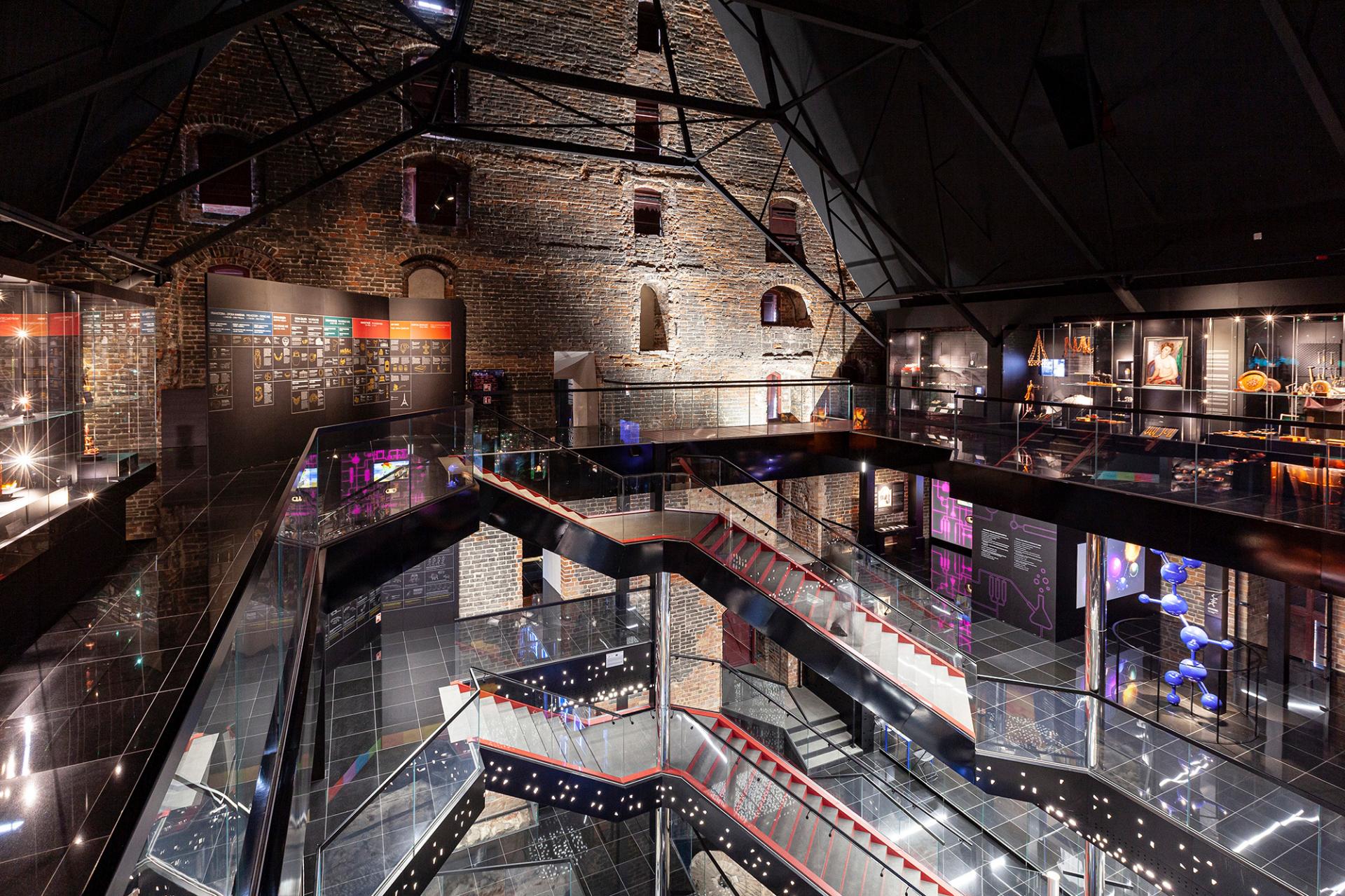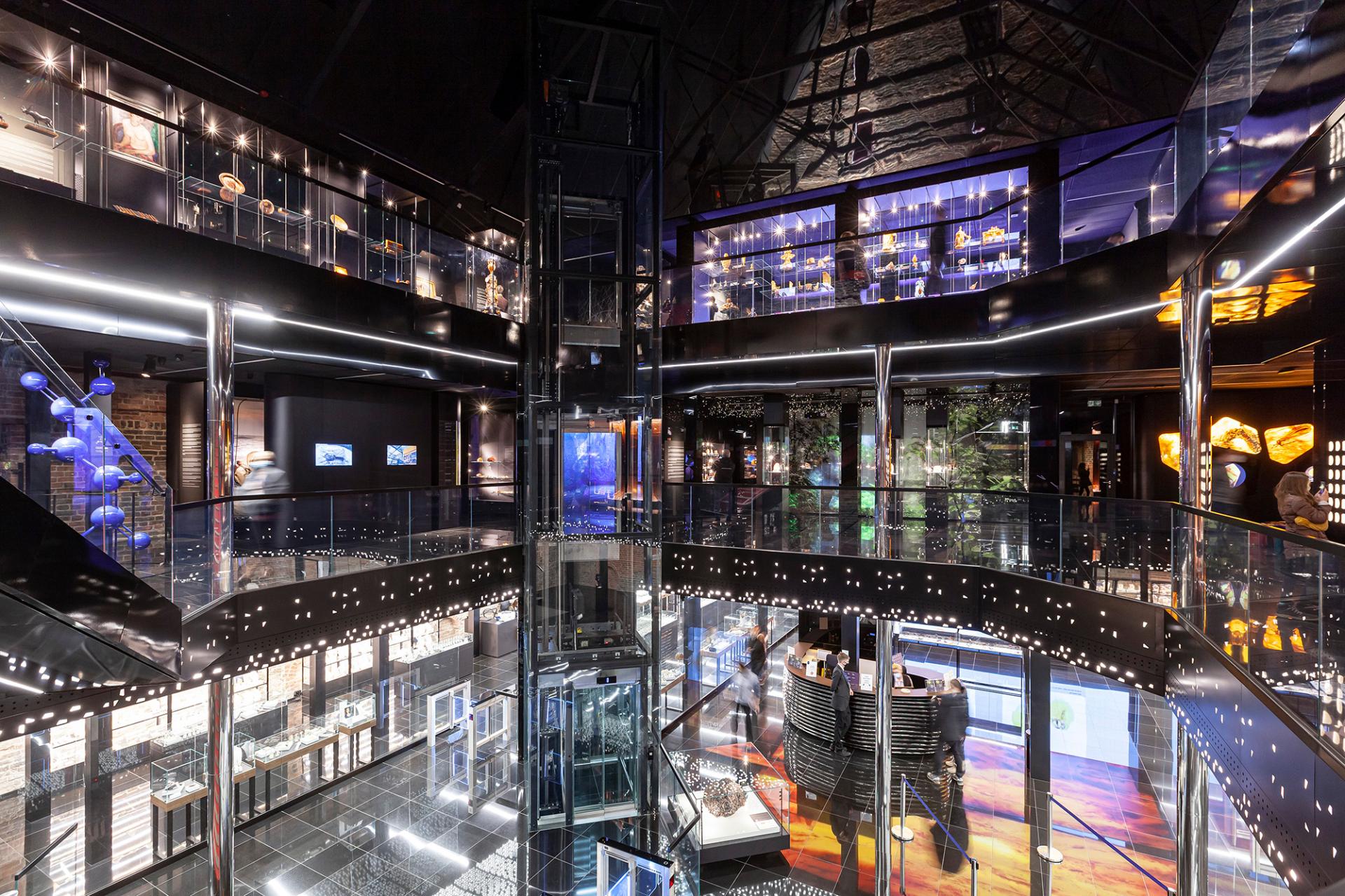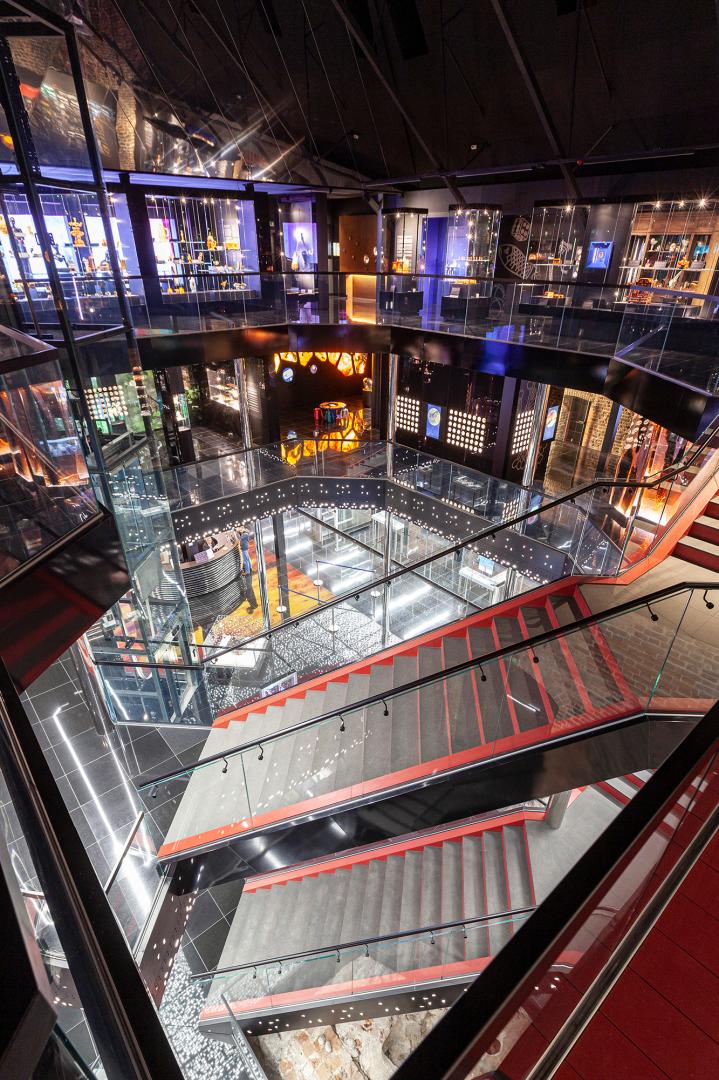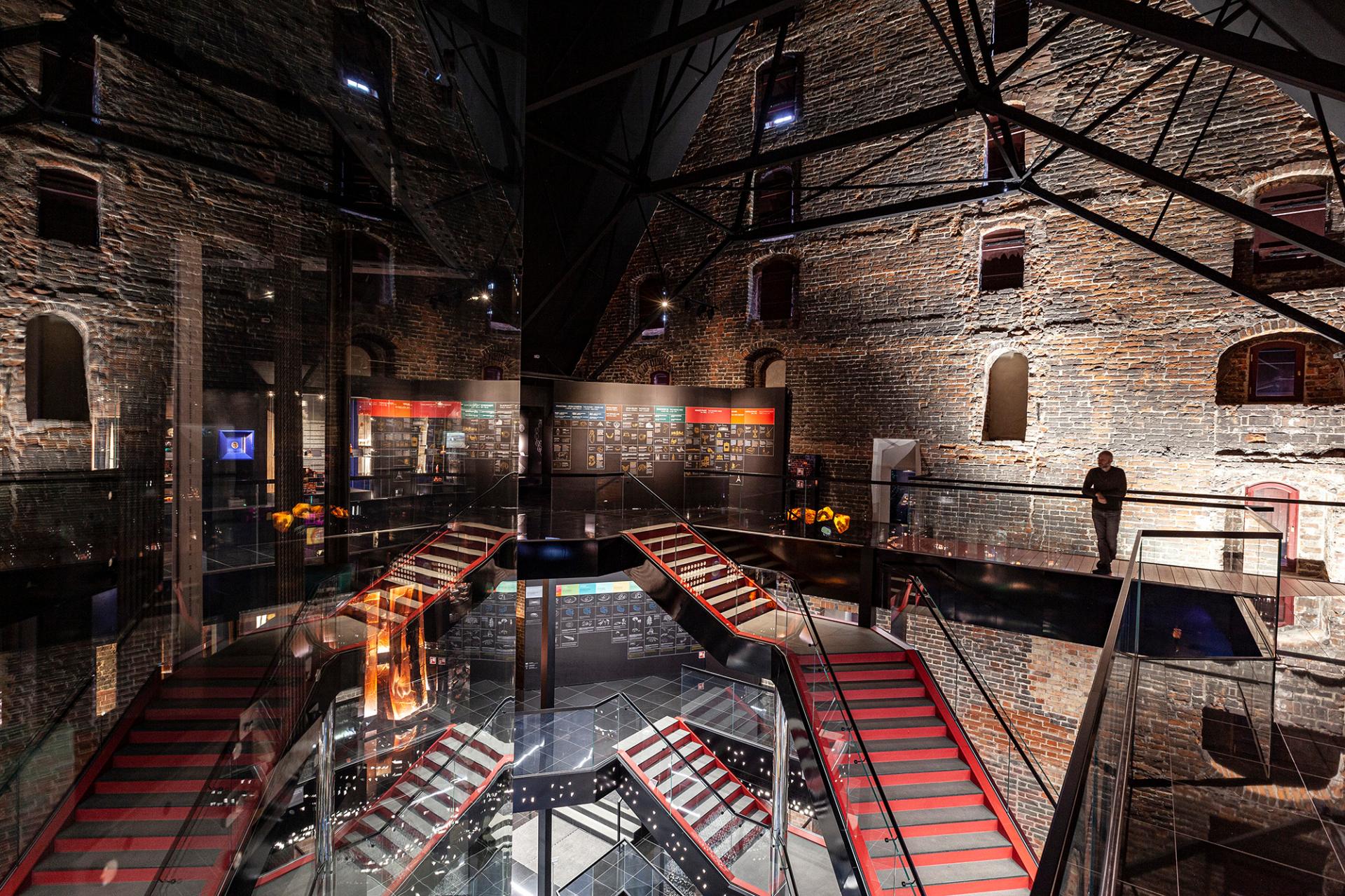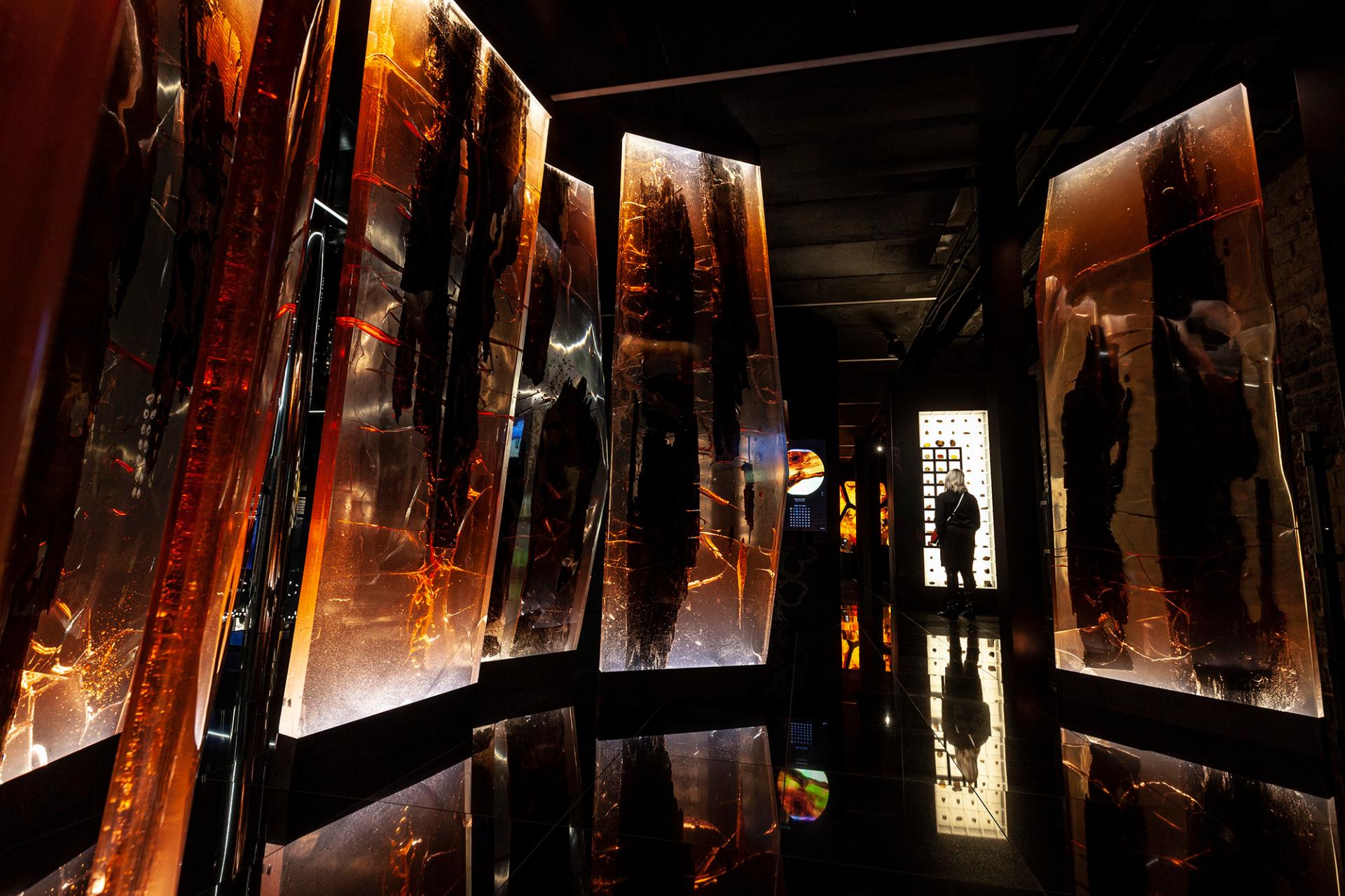Amber Museum in Teutonic Mill
Basic information
Project Title
Full project title
Category
Project Description
Amber inspires! It recreates brand of Gdansk city again! It connects history with present, refreshes cooperation with countries of southern Baltic coast and the amber trade route. It enhances local craft and artistic identity and integrates international community of visitors inviting them into walls of the largest post-Teutonic mill adapted to museum’s needs in spirit of architectural recycling and zero waste philosophy. The neglected monument has once again become the pride of city and region
Geographical Scope
Project Region
Urban or rural issues
Physical or other transformations
EU Programme or fund
Which funds
Description of the project
Summary
The adaptation of one of the largest and most valuable monuments in Gdansk has contributed to restoring the memory of the importance of the local community in the history of the southern Baltic coast. This architectural realization is a marriage of multinational local tradition and identity with contemporary creativity and cultural diversity. The architectural design was based on the principles of architectural recycling and "zero waste" trends - instead of constructing a new museum headquarters, the large, located in the city centre abandoned volume of the historic Teutonic mill was reused; the existing, secondary concrete structure in the mill left after the former commercial facility was adapted to reduce the built-in carbon footprint of the new project, to drive down its costs, and respect the archaeological and historical structures of the historic building. Inside there were applied the energy-saving devices, media consumption optimization systems as well as construction and finishing materials, mostly natural and local, with high durability, which will not require replacement for years of use (to reduce the operational carbon footprint).
In museum’s architectural concept participated the local communities associated with the amber craft and interested in the protection of the local and regional identity of the city. The aim of introducing a cultural institution telling the golden history of the city in a post-Teutonic post-industrial facility was to build a community among the local society, restore trans-regional contacts, and create a platform for artistic, research and scientific and cognitive exchange. Due to the fact that the exhibition and the issues discussed at it concern many countries historically associated with amber, the project was financed from the following sources: EU project "Connected with Amber", Cross-border Cooperation Program Poland - Russia 2014-2020 and the own contribution of the city of Gdansk.
Key objectives for sustainability
In 2015, at the time of taking over the historic building of Great Mill for the new purpose the object contained the former commercial function’s infrastructure – a steel and reinforced concrete structure of floors introduced in the 1990s. The initial wish of investor was the total removal of the existing interior arrangement and the new structure’s introduction. We found that such operation would entail many difficulties, e.g. violation of the historical foundations of Great Mill and damage to its historic structure. Pre-design phase experts’ opinions and evaluations of the existing structure’s condition confirmed that it can be used, with local reinforcements, for the needs of newly introduced institution. This only strengthened our idea of reusing the existing investment in the Great Mill to optimize the energy spent on the construction, to use and process the existing in the facility material resources. We used again e.g. recovered steel structure elements, glass from former partition-walls and balustrades, polished steel and stone cladding. Financial limitations also influenced taking up this path of designing and implementing the project, which have become our ally in persuading all to deploy solutions in the spirit of architectural recycling. The research showed the high insulation capacity of the historic brick walls of the mill due to their thickness of 1.6-2.2m. Not original roof structure was replaced due to its poor technical condition, to improve the energy efficiency of the building. Inside there were applied energy-saving devices, media consumption optimization systems as well as construction and finishing materials, mostly natural and local, with high durability, which will not require replacement for years of use (to reduce the operational carbon footprint). In the future-while mill is both sides surrounded by historic water canal - it is planned to recreate 18 mill wheels as modern water turbines - a source of renewable energy used by the museum.
Key objectives for aesthetics and quality
The design and realization of the Amber Museum respect both the abundant history and uniqueness of the medieval post-industrial facility, as well as the beauty of amber. We decided that both elements of this puzzle should not compete with each other, so the architectural and interior design project focuses on displaying the most attractive elements of the monument: brick walls and archaeological excavations, and at the same time creates an optimal atmosphere for the presentation of amber exhibits. The interior uses a narrow range of finishing materials with a noble, durable and natural character - granite, glass, and stainless steel. An advanced lighting system for exhibition spaces has also been introduced, which enables multiple arrangements of the public space fashion shows, lectures, cultural events, but also for the evacuation of visitors or periodic technical inspections. In the project, we tried to create the central space of the museum as all-purpose, to show its beauty, size and versatility. The naturally dark interior (the mill has few windows, but a huge gable roof) is complemented by galleries, a new bridge, stairs, elevators, open spaces, lighting and black finishes, which emphasize the dignity of the space. The entire building was to become a beautiful casket containing valuable collections. Hence, the exterior of the building has been kept almost without architectural interventions, focusing on the potential and future tasks of the historic building’s interior.
Key objectives for inclusion
The Amber Museum is a Craft Museum presenting the local historical heritage related to the mining, processing and multi-faceted use of amber. The museum’s program and exhibition content were developed as a part of cross-border cooperation established with other countries historically associated with the amber route, to shape future social and integration ambitions on a regional scale. The subject of temporary exhibitions often responds to current social issues and is part of the local platform for the exchange of ideas and views. Local communities associated with the amber industry and interested in the protection of the local and regional identity of the city, including the International Amber Association and the Association of Conservators of the Republic of Poland, participated in the preparation of the architectural concept. The ideas of moving the Amber Museum to the Great Mill and the initial architectural concepts were reviewed by the city's inhabitants in numerous articles and questionnaires published on the forum of the local news website Trojmiasto.pl, in which over 5,000 users of the portal, residents of the city, participated in the period 2016-2018. In line with current requirements and expectations, architectural solutions guarantee full accessibility for all social groups. The permanent exhibition also has arranged spaces dedicated to younger visitors. Once a week, admission to the museum is free to meet public expectations regarding affordability.
Results in relation to category
The monumental Great Mill has changed its purpose many times since the end of World War II. The most difficult period was 20 years after the war, when it was neglected as an unwanted, post-German heritage. Until the 1990s there was no wise, feasible idea for its reuse that would restore the Mill to the city in the sense of playing an important, valuable role in the local consciousness. The intense changes in Poland towards a market economy in 1990s gave this monument a chance to make it big. And this formula lasted until 2015, when the structure of a commercial facility in a historic building devalued in the light of contemporary expectations for shopping centers. Our project proposed the introduction of a new, alternative function to this valuable and important monument for the history of the city and region, but of a culture-creating and promoting social identity related to craftsmanship and amber processing, which has been present in the Gdansk region for generations. By introducing a museum institution, we wanted to guarantee a stable, wise and long-term use of the historic building. But most of all, we wanted to regain sense of belonging to all those who live in Gdansk at a particular moment, and have always been building an international environment with great artistic and civic potential. We consider it a success that the design and the progress of works on the construction site were regularly communicated to the city residents, and the articles and photos of the progress of works were often commented on, which showed how popular this project was. From the a few months observation perspective after the opening of the Amber Museum in Great Mill, we can say that so far both the facility and the institution meets the hopes placed in them when it comes to animating local social life, regaining a sense of belonging, but also promoting the values of Gdansk among international visitors.
How Citizens benefit
We were looking for support for our idea among many environments, hence the target project, before it was created, was preceded by extensive consultations with interested local and international communities. The ideas of moving the Amber Museum to the Great Mill and the initial architectural concepts were reviewed by the city's inhabitants in numerous articles and questionnaires published on the forum of the local news website Trojmiasto.pl, in which over 5,000 users of the portal, residents of the city, participated in the period 2016-2018. Lectures on the strategy of the Great Mill’s reuse as well as presentations of design intentions related to the Amber Museum were organized by the Gdansk Museum and the city authorities, in which the city's residents were willing to take part. As a result of post-presentation discussions, numerous comments were made, often constructive ones, concerning both the scope of the museum's permanent exhibitions and the functional solutions of the new museum. We used the hints for creating an educational zone or amber certification point in the final architectural project. As a result, the final expression and shape of the museum more closely corresponds to the expectations and needs of the local community.
Physical or other transformations
Innovative character
1. In alternating reuse or modernization of historical buildings seeks customarily to remove contemporary layers and interference and to leave the historical tissue of the monument legible, in combination with the newly designed structure. Our design retains most of the existing structure - including the modern layering - due to the diverse reasons mentioned above.
2. After many failures related to the implementation of alternative functions to the monumental Great Mill in Gdansk, it was decided to introduce a culture-forming, non-commercial function. We wanted the selected solution to be durable, which will be beneficial for both the historic building and the institution moving into the historic walls.
Learning transferred to other parties
Issues related to the reuse of historical Great Mill for contemporary purposes through decades have been the subject of numerous studies conducted since the 1990s, and their results have been published and disseminated in the form of articles and scientific publications, including: Piatkowska, Ksenia: Museum Institutions in Monuments - Positive and negative aspects of adaptation: the New Amber Museum and Museum of Science in Gdansk, Poland, WMCAUS 2017, http://iopscience.iop.org/article/10.1088/1757-899X/245/5/052080, Ratajczyk-Piątkowska Elżbieta: Commercial function as a treat to the monument - 25 years of experience in the commercialization of monuments in Gdansk, Poland, 2017, IOP Conf. Ser.: Mater. Sci. Eng. 245 052081 https://iopscience.iop.org/article/10.1088/1757-899X/245/5/052081 or Ratajczyk-Piątkowska Elżbieta: Protection of monuments in the period of the market economy on the example of the modernization of the Great Mill in Gdansk, 2001, Gdansk University of Technology Publishing, ISBN: 83-88007-82-3
The results of research on the historical structure of the Great Mill and the scope of its adaptability were also presented at numerous public lectures and presentations, during our academic activity at Gdansk University of Technology too. The architecture of the Amber Museum was discussed in professional magazines, e.g. Architektura-murator, No. 2 2022, https://architektura.muratorplus.pl/realizacje/muzeum-bursztynu-w-gdansku_11723.html.

